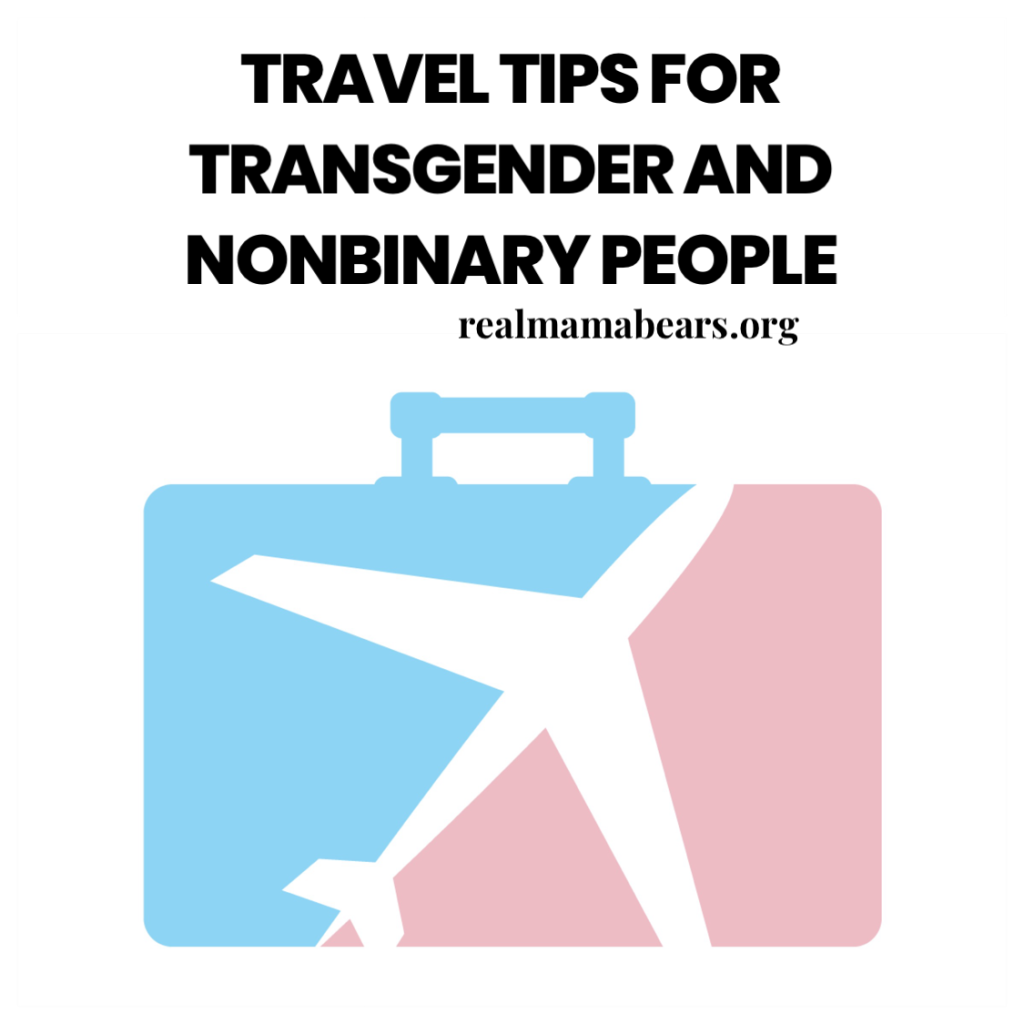
Traveling can be a wonderful experience, but for transgender and non-binary folks it can also include some unique challenges along the way.
Whether traveling within the United States or venturing abroad, it’s important to be informed and prepared for things that may arise during your travels. Check out these essential tips to help make your journey smooth and enjoyable!
* Research, research, research! Stay informed about the laws, customs, and cultural norms of your destination to understand the local attitude towards transgender people.
* Ensure your travel documents match your gender identity to avoid issues at borders or airports. Be sure to book your flight with the same name, gender, and birthdate as the ID you plan to travel with. If your current ID has your dead-name on it, that’s the name you have to use when booking your flight.
* Keep all updated documents on YOU. A general safety tip is to make sure you have all necessary travel documents on your person so they are available at all times. This includes your ID, passport, work permit, and green card (if applicable) among other items. Make sure your name, gender, photo, and country of origin are updated to match your government-issued photo ID. If the items are not updated with your current name, photo, and gender, make the necessary steps to update those to avoid any issues while at the airport or in another country. Any items that are not matching ( e.g. the gender on your passport does not correlate to the gender on your ID) may cause issues when traveling. Depending on where you’re from, you might have the option to mark ‘X’ on your passport (such as the case with the United States in recent years), that indicates your gender. Be prepared to have an explanation or supporting documents when traveling to countries that do not recognize an X gender marker.
* Consider completing a discreet notification card. How much you disclose to the TSA is up to you. One option for quietly communicating with TSA personnel is to use a preprinted “Notification Card” to disclose a particular personal item, medical condition, or other information. This card can be printed at home or carried in a photo on your phone. You can download the template for the card from the TSA website. TSA agents are trained to recognize this card, and to take action to provide the appropriate screening procedures.
* Carry documentation for your prescriptions. If you travel with medicines or hormones in your carry-on, bring proof of prescription from a doctor. This could be in the form of a pharmacy reciept or a letter from your physician stating the items are medically necessary. If you’re traveling with syringes you’re required to declare them to TSA personnel at the airport checkpoint so they can be inspected. You can tell the TSA agents directly or use the Discreet Notification Card. It’s important to keep prescribed medicines and medical devices with the pharmacy labeling intact.
* Choose transgender-friendly accommodations. Look for hotels, hostels, or vacation rentals that have a history of welcoming transgender guests.
* Pack wisely. Consider packing clothing and documents that align with your gender identity.
* Stay connected. Save important phone numbers, like your emergency contact and insurance provider, and consider registering with your government’s travel advisory program. And always let a trusted friend or family member know where you are traveling, your flight info and where you are staying.
* Be prepared for airport security. Know your rights and be ready to explain your medical procedures or medications if needed. TSA scanners are now equipped with software called Automatic Target Recognition (ATR). ATR analyzes the scan image of the body and displays an outline of a generic person with the location of anything the software identifies as an “anomaly” or “alarm” that TSA agents need to look at more closely. With ATR, according to the TSA, images of a traveler’s actual body are never viewed by humans. TSA does not disclose how ATR detects anomalies, however in some cases, ATR software can register body contours not typical for a person’s gender as anomalies. Foreign objects such as prosthetics, binding garments, or even paper or change left in a pocket will commonly register as anomalies requiring further screening. Often this consists of a limited pat-down of the area(s) where an anomaly was detected, however it can potentially involve a complete pat-down. You may opt out of AIT scans at any time, but if you do opt out of AIT screening, you will be required to undergo a thorough pat down. Pat downs will be done by an agent matching your gender identity.
* Find LGBTQ+ friendly spaces. Look for local organizations, bars, or events that cater to the transgender community.
* Trust your instincts. If you feel uncomfortable or unsafe, don’t hesitate to seek help or change your plans.
* Consider TSA precheck. TSA offers an “expedited screening” program called TSA Pre-Check for travelers at a growing number of participating airports. While the program does not guarantee that one can avoid body scans or pat-downs, participants often go through a metal detector instead of a body scanner, and may experience pat-downs less frequently. Participants can also take advantage of conveniences such as leaving shoes and belts on during screening. Passengers who meet certain eligibility requirements may enroll in TSA Pre-Check directly by completing an online application, paying a $85 fee (fee covers membership for 5 years), and providing fingerprints at an approved enrollment center. Please note that applicants likely must disclose prior names during the approval process.
Remember to stay informed, plan ahead and don’t hesitate to seek help if needed.
Safe Travels!!
Real Mama Bears is dedicated to supporting, educating and empowering families with LGBTQ+ members and the LGBTQ+ community. For more info about Real Mama Bears visit realmamabears.org.
